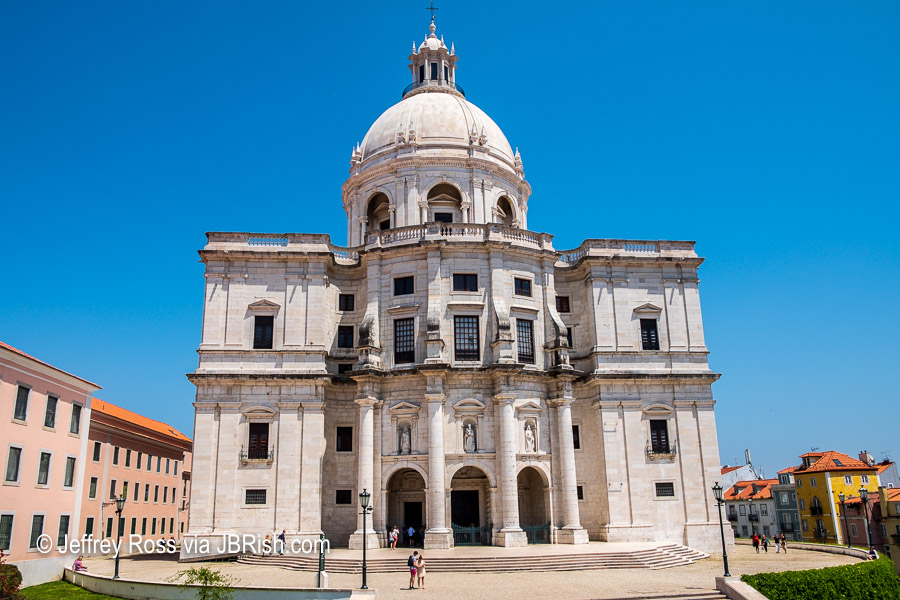
One of the main attractions for tourists in Alfama is the National Pantheon. The dome of this historic structure can be seen from many viewpoints in and around the town. To learn more about this church that was constructed over a period of hundreds of years, visit the link below which states:
A visit to the National Pantheon is indispensable, not only because of the architectural and historical features, but for all the symbolism it represents in Portugal’s history.
After the visit, enjoy the street to the right of the Pantheon (above) which has a curved row of colorful houses.
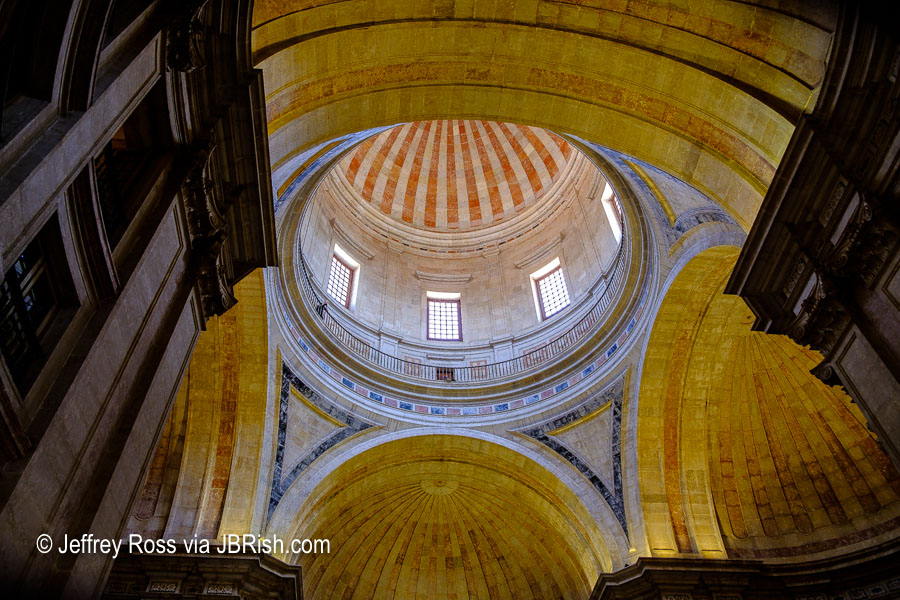
The large dome is impressive from the outside, but even more impressive from the inside. While we didn’t visit the Pantheon’s terrace, it is reported to be a great vantage point from which to view the Tejo River and much of Alfama.
One of the activities we most enjoy when visting other countries is walking around the local streets to get a better understanding of the culture. We appreciate the differences and marvel at the similarities we find in foreign destinations. There were numbers of houses that dried their laundry the old fashioned way, on a clothesline. These displays often create in interesting and colorful image. (Notice the plants growing along the roofline in the gutter.)
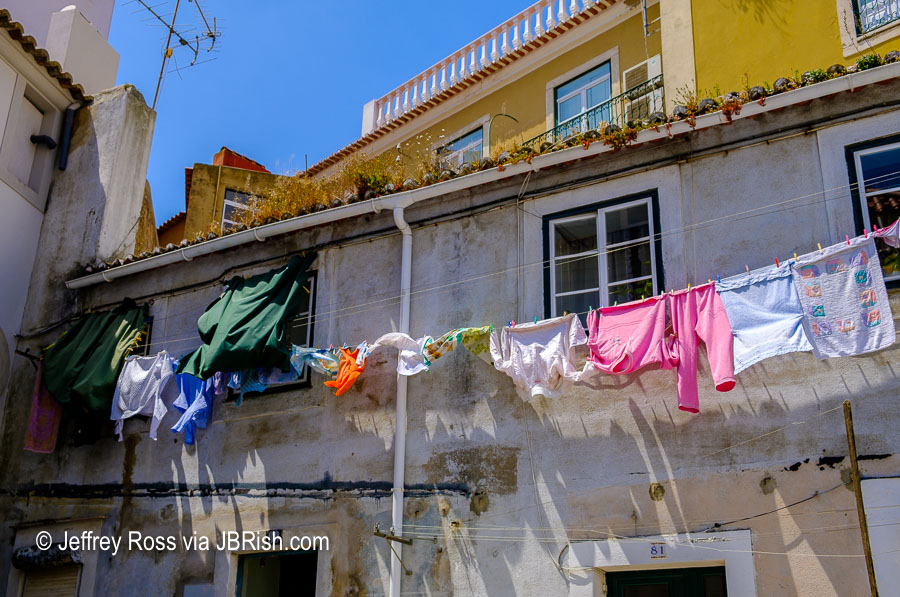
This was one narrow walkway that we sought out because we read about a surprise nearby. There is a large amount of graffiti along certain alleyways. This art form does not seem to be as much of an outcast as it was years ago and has now become more or less accepted.
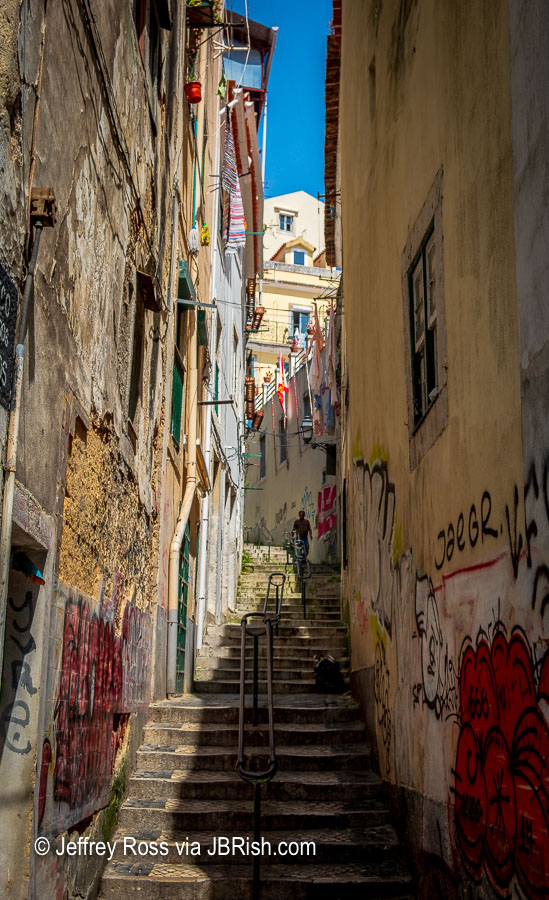
This is what we wanted to see. Not the black doorway at number 26, but…
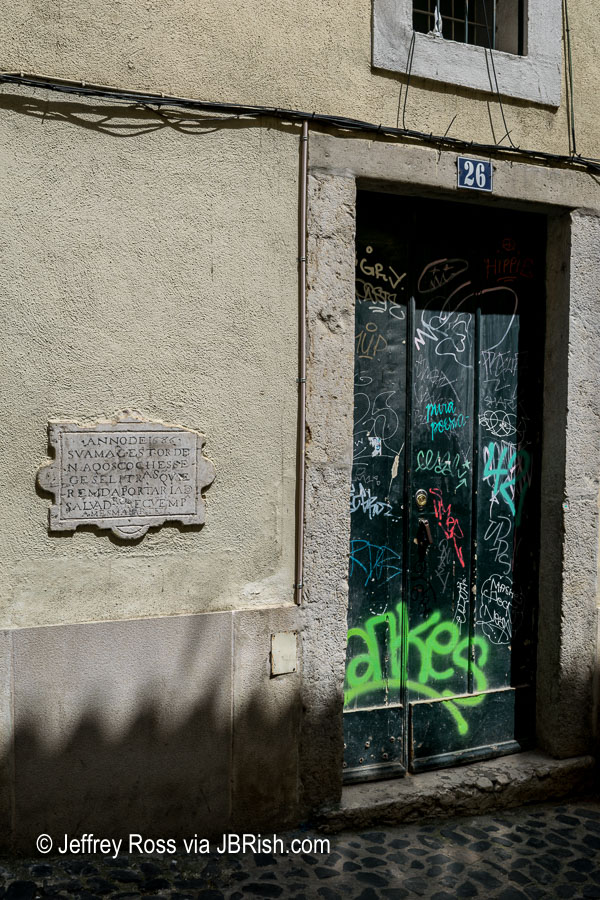
this traffic sign. It is one of the oldest in the world. The sign is said to have survived on this wall since 1686.
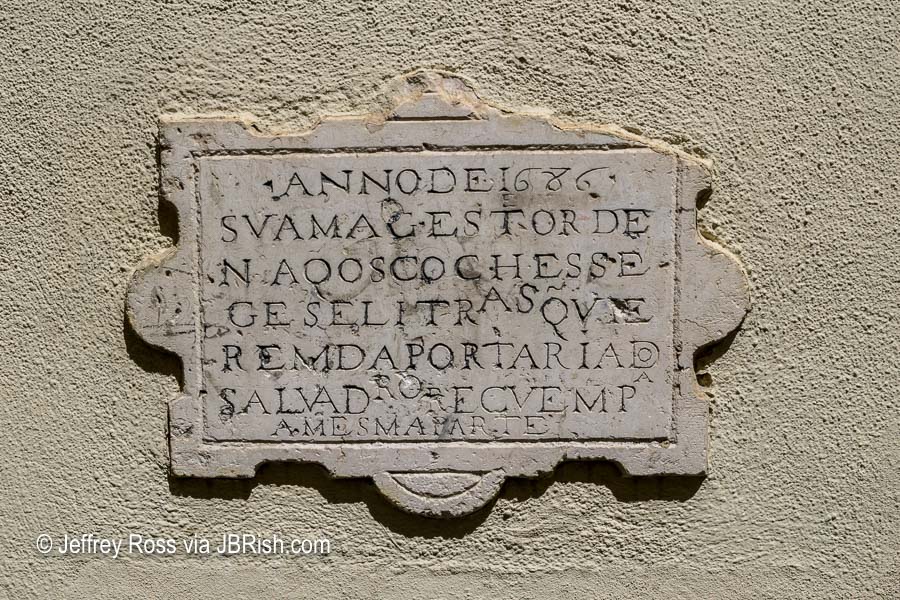
Here is the translation Via:
It says: “Year of 1686. His Majesty orders that the coaches, carriages and litters that come through the gateway of Salvador go back the same way.” It is suggested that the sign is intended to direct opposing traffic that if they meet, the downhill traveler should back up to make way for the uphill traveler.
The Rua Norberto De Araujo (below) is a street with an ancient Moorish wall built in the 10th century which curves under and around the Portas Do Sol.

Near the Rua Norberto De Araujo and terraces, there is a tiled tourist map of the Alfama district with a suggested route marked in red.
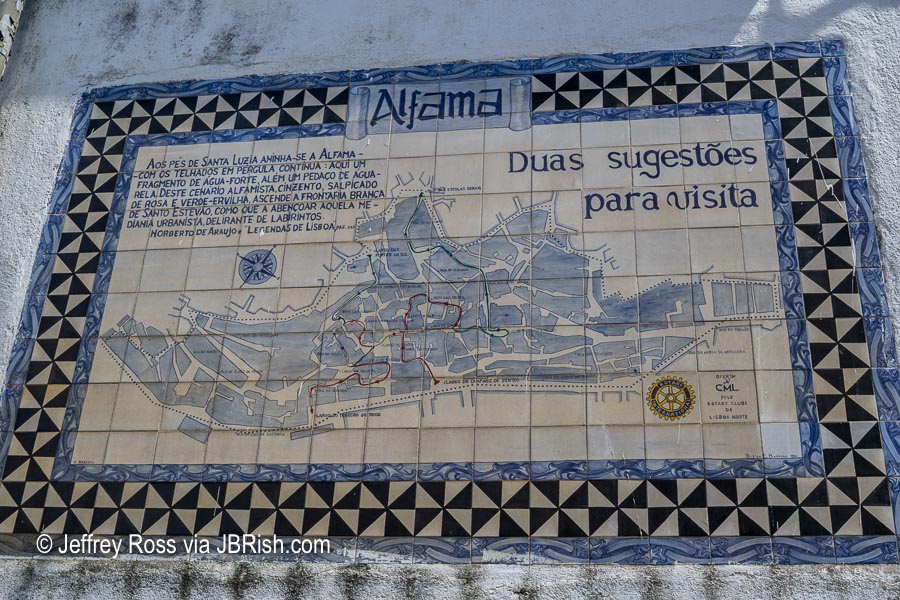
Prior to leaving the district and heading back to the hotel, I stopped to check out this unique alcove-arch near the public restrooms off of the Rua Norberto De Araujo stairway. It is a series of comic book panels depciting the history of Portugal. As I took the photograph, I could hear a guide explaining the major events depicted.
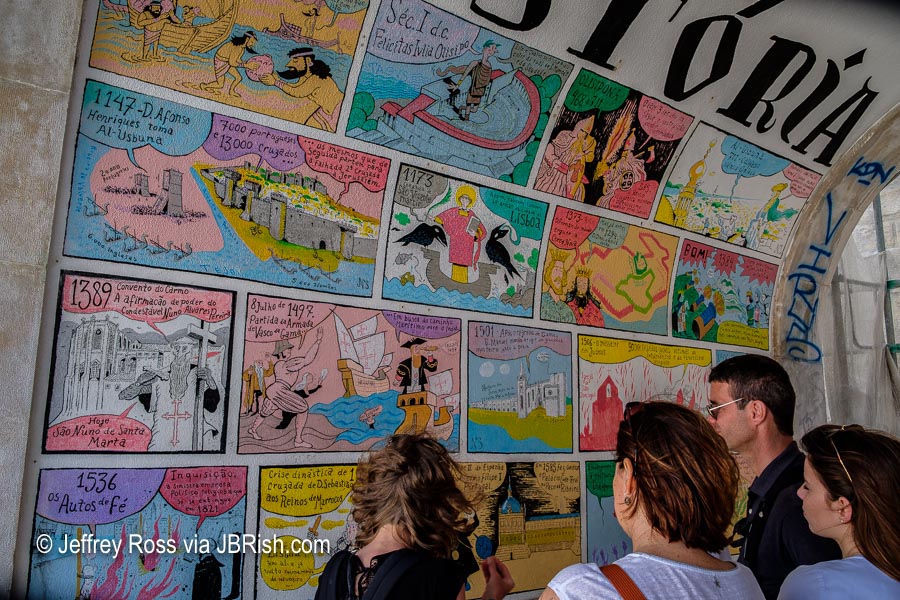
Alfama certainly is an interesting area of Lisbon to visit. If you are interested in a walking tour of the area, this web page might be a worthy resource.
**********
***************
Continue reading about our trip to Portugal and Spain.
Read more Hiking and Exploration posts HERE
**********
All original content on this blog is copyrighted by Jeffrey B. Ross with ALL Rights Reserved. While reference links back to JBRish.com are appreciated and encouraged, please acquire approval for any reproduction of original content from this website.
©Jeffrey B. Ross – 2018 – JBRish.com